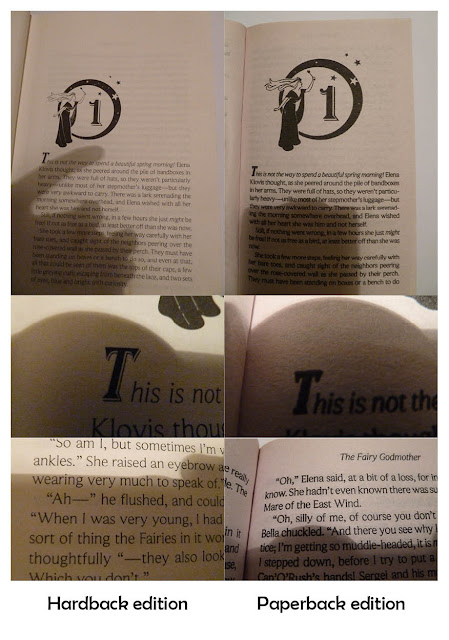

You’ll know if a book is a trade paperback or not by looking at the back cover and the title page. And, they don’t have the added thickness, width, and height of the hardcover. They usually have a thicker cover than the mass-market books. They’re typically the same size as the hardcover books, but slightly smaller because the binding is made differently. Trade paperbacks are the less expensive version of the hardcover edition. These books will most commonly never receive a hardcover printing.

This format helps keep the cover price down, making these books more attractive to a broader audience in a very competitive market. When self-publishers publish their fiction books, they are typically only released in the mass-market format. “Understanding the differences between ‘mass-market paperback’ and ‘trade paperback’ formats will help you start to feel and sound like a real book publisher.” (Tweet) Therefore, the book retailers must return the entire book, not just the cover. Inversely, trade paperbacks are not strippable. The book retailers are supposed to destroy the rest of the book.
#Difference between hardcover and paperback full
Mass-markets are “strippable.” This means that bookstores can rip off the front cover and return only the cover for full credit from the distributor. Mass-market paperbacks are also distinguished from hardcover and trade by the different business practices that publishers and booksellers apply to them. The paragraph in the middle discusses the cover and what happens when a book is stripped. Title page of a mass-market paperback book. Some people refer to them informally as “pocketbooks.” Some people refer to them informally as “pocket books.”Īnd, they’re most known for being sold in non-traditional bookselling locations such as airports, newsstands, drug stores, supermarkets, etc. And they’re most known for being sold in non-traditional bookselling locations such as airports, newsstands, drug stores, supermarkets, etc. When the big publishing companies sell them, they’re often released after the hardcover edition. The standard size is 6.75” tall x 4.25” wide, and frequently uses a font, leading (pronounced: ledding), and smaller line spacing. A mass-market paperback is a small, usually non-illustrated, less-expensive bookbinding format. Here is a quick discussion and explanation of mass-market paperbacks and trade paperbacks:įor the masses on a budget.

Please include attribution to with this graphic. Therefore, you need to be familiar with and understand the similarities and differences. As a self-publisher, these are the two formats that you’ll be typically dealing with most often. But here, we’re concerned with understanding the differences between the two types of paperbacks.

In the USA, the most common formats for fiction and non-fiction printed books fall into three main categories:Įach of them can then get broken down into several more categories. You will learn how British paperback books compare to America’s paperbacks. You will learn how each type of these paperbacks are similar and different.ģ. You will learn the significant characteristics of mass-market paperback books and trade paperback books.Ģ. So, here is a quick discussion and explanation of mass-market paperbacks and trade paperbacks.ġ. Here is an explanation of the differences between the two main types of paperback books: mass-market paperbacks and trade paperbacks. Subscribe: Apple Podcasts | Spotify | RSS | More


 0 kommentar(er)
0 kommentar(er)
